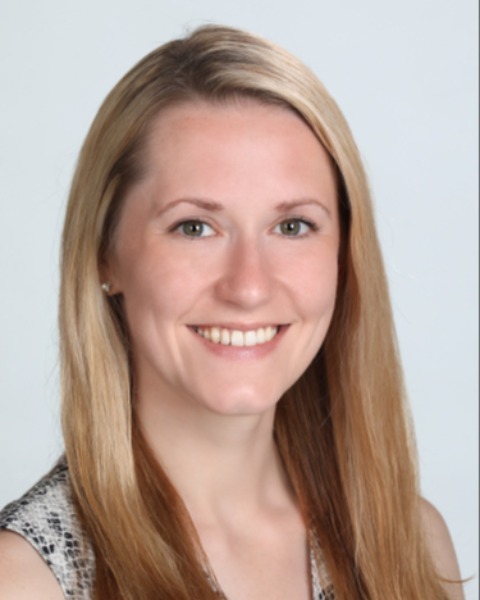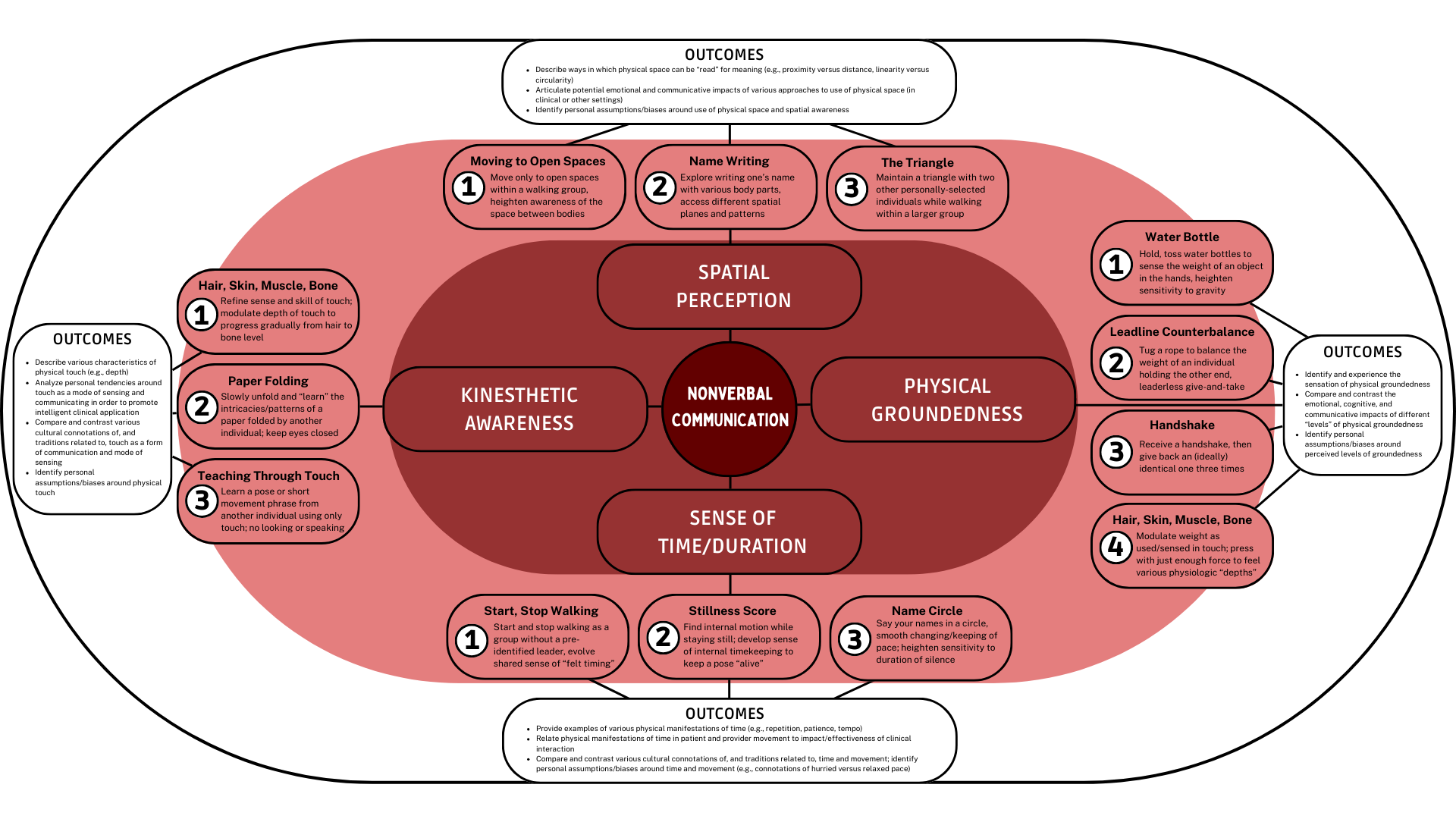Medical Education 2: Curricular innovations and assessment 2
Session: Medical Education 2: Curricular innovations and assessment 2
509 - Physical Listening: a Novel Interdisciplinary Course in Non-Verbal Communication for Healthcare
Friday, April 25, 2025
5:30pm - 7:45pm HST
Publication Number: 509.6253
Nina Shevzov-Zebrun, Lucile Packard Children's Hospital Stanford, Redwood City, CA, United States; Trudy Kim, Stanford University School of Medicine, Livermore, CA, United States; Malathi Srinivasan, Stanford University School of Medicine, Stanford, CA, United States

Nina Shevzov-Zebrun, MD (she/her/hers)
Resident Physician
Lucile Packard Children's Hospital Stanford
Redwood City, California, United States
Presenting Author(s)
Background: More than half of communication is non-verbal, related to subtle, contextual components of physical movement. Current medical school curricula focus heavily on “what to say.” Non-verbal communication, however, focuses on “how to be” with others—and, in turn, how to understand cues patients share physically. To our knowledge, limited curricula exist to teach non-verbal communication skills to healthcare trainees.
Objective: To improve future clinicians’ non-verbal communication skills via an interdisciplinary lens—specifically, leveraging frameworks and techniques traditionally used to teach dancers.
Design/Methods: In 2024, we piloted Physical Listening, a 10-week course cross-listed between a large academic center’s School of Medicine and Department of Theater and Performance Studies. Weekly seminars explored core movement principles (e.g., space, time, touch) through targeted exercises, then highlighted practical applications of those principles via guest lectures with clinical faculty. Using a pre- and post-course Qualtrics survey with Likert-like questions, we evaluated understanding of key course concepts and self-assessment of non-verbal communication skills, as well as reasons for enrolling. We also conducted semi-structured interviews with students to probe course utility, perceived value, and areas for improvement.
Results: 11 learners joined Physical Listening (9 premed undergrads, 1 premed grad, 1 medical; 9 females). 8 completed pre- and post-course surveys. All were interested in clinical careers, and wanted to improve communication skills. After course completion, learners reported enhanced understanding of kinesthetic awareness, spatial perception, and recognition of non-verbal physical “language.” In comparison to pre-course, students after reported improved awareness of differences in the speed of their own movements vs others’ movements (2.7 vs 4.1; p 0.06), ability to describe key characteristics of physical movement (2.6 vs 4.5; p 0.02), and conscious use of proprioceptive sense (2.9 vs 4.5; p 0.04). Thematic analysis of interview data (5 students, 4 female) revealed perceived value of course content, along with suggestions for improvement, namely shorter class duration.
Conclusion(s): Physical Listening successfully taught clinical non-verbal communication skills using a lens of dance and movement analysis. To our knowledge, this is the first non-verbal healthcare communication course in the U.S. to use an interdisciplinary lens. Additional studies are required to further quantify Physical Listening’s impact on non-verbal communication from both provider and patient perspectives.
Physical Listening: Course Conceptual Framework
 Physical Listening explores the following key components of physical movement (and thus non-verbal communication): space, time, physical groundedness, and touch--as well as kinesthetic awareness more broadly speaking. This figure provides examples of targeted movement exercises used to train / teach each of these components, as well as learning objectives / outcomes for that dedicated portion of the course. Of note, later course sessions integrate across these concepts to build a more comprehensive picture of physical movement and its role in interpersonal communication.
Physical Listening explores the following key components of physical movement (and thus non-verbal communication): space, time, physical groundedness, and touch--as well as kinesthetic awareness more broadly speaking. This figure provides examples of targeted movement exercises used to train / teach each of these components, as well as learning objectives / outcomes for that dedicated portion of the course. Of note, later course sessions integrate across these concepts to build a more comprehensive picture of physical movement and its role in interpersonal communication.
